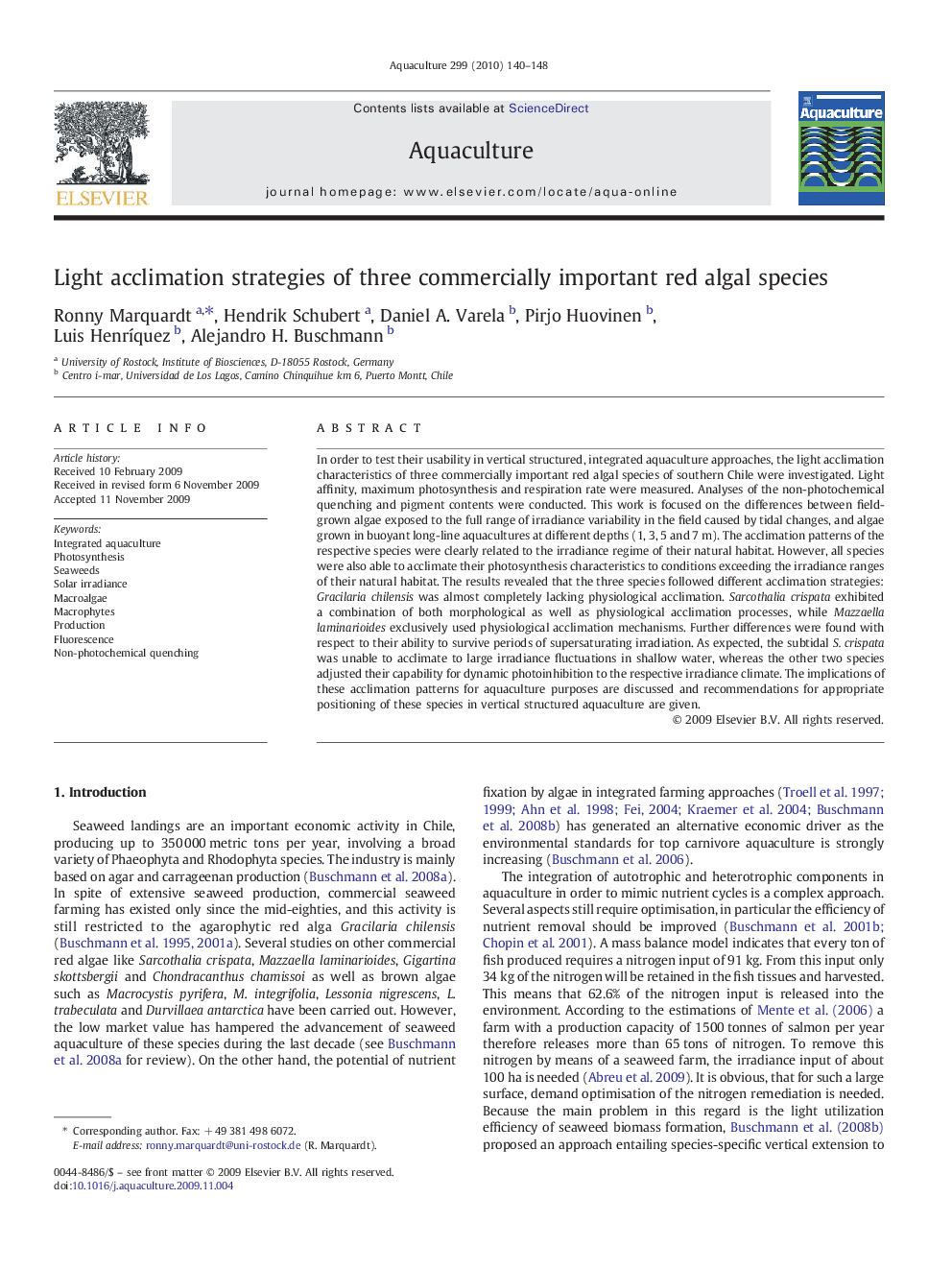| Article ID | Journal | Published Year | Pages | File Type |
|---|---|---|---|---|
| 2423783 | Aquaculture | 2010 | 9 Pages |
In order to test their usability in vertical structured, integrated aquaculture approaches, the light acclimation characteristics of three commercially important red algal species of southern Chile were investigated. Light affinity, maximum photosynthesis and respiration rate were measured. Analyses of the non-photochemical quenching and pigment contents were conducted. This work is focused on the differences between field-grown algae exposed to the full range of irradiance variability in the field caused by tidal changes, and algae grown in buoyant long-line aquacultures at different depths (1, 3, 5 and 7 m). The acclimation patterns of the respective species were clearly related to the irradiance regime of their natural habitat. However, all species were also able to acclimate their photosynthesis characteristics to conditions exceeding the irradiance ranges of their natural habitat. The results revealed that the three species followed different acclimation strategies: Gracilaria chilensis was almost completely lacking physiological acclimation. Sarcothalia crispata exhibited a combination of both morphological as well as physiological acclimation processes, while Mazzaella laminarioides exclusively used physiological acclimation mechanisms. Further differences were found with respect to their ability to survive periods of supersaturating irradiation. As expected, the subtidal S. crispata was unable to acclimate to large irradiance fluctuations in shallow water, whereas the other two species adjusted their capability for dynamic photoinhibition to the respective irradiance climate. The implications of these acclimation patterns for aquaculture purposes are discussed and recommendations for appropriate positioning of these species in vertical structured aquaculture are given.
